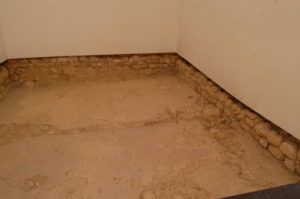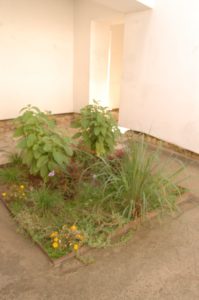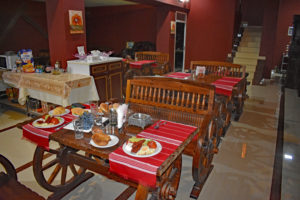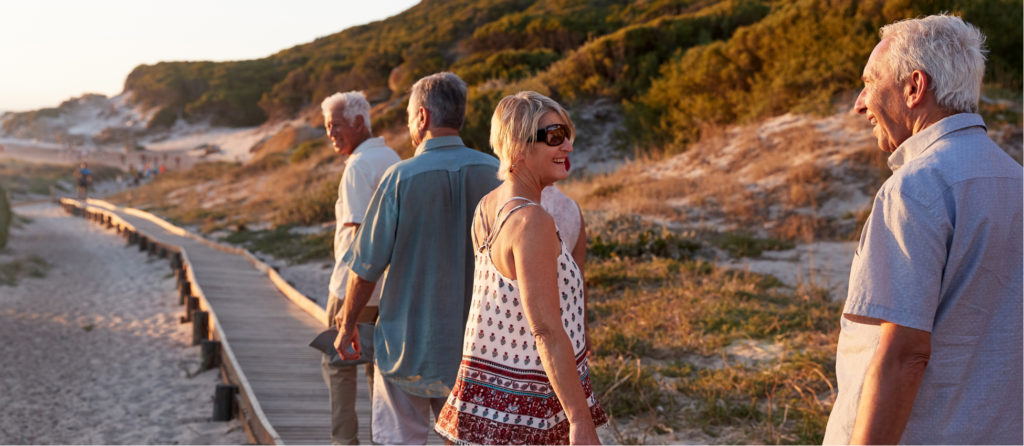Somewhat reconstructed after its desertion for a more luxurious palace by royalty, the Castle is still a very impressive building and offers wonderful views across Lisbon and the Tejo river. A few problems for less mobile visitors lie between the bus or tram terminal and the castle entrance but inside considerable care has been taken to offer wheel-friendly and level walking routes.
For some the major hazard may be the peacocks, less those on the ground than those in the trees. We noticed a few empty tables outside the cafe for obvious reasons.
The journey is interesting, whether you stand in a crowded tram or sit in a bus. Both start from near the main station, Rossio, and take slightly different routes. Each is fairly steep, however, almost precipitous at times. The defensive strength of the castle is easy to see.
A generous courtyard allows visitors to regain breath and decide routes; most begin as we did with a lengthy perusal of the rooftops below. They give a strong impression of the density of modern Lisbon in the Alfama. Both castle and Alfama withstood the earthquake of 1755, although later tremors persuaded the nobility who had replaced their Moslem counterparts to leave the area for more spacious accommodation.
Battlements and towers are very impressive but for us most interesting were the traces of earlier occupation unearthed in recent excavations. There is a museum with detailed information on finds within the castle. By chance we were able to join a tour in English which provided much more information than a view from the walls. It is worth checking the times of these on a board in one corner of the excavation, near the Moslem house. There are three main areas: the bishop’s palace that succeeded the royal residence, a Carthaginian house and the Moslem. Distinctive style appears in each, with the Carthaginian showing right-angled walls that superseded the round house of the Iron Age. Signs of Roman occupation are lower down the hill although the summit must have been used then built over.
Interestingly, the tour lingers over the Moslem house possibly because the palace had so many rooms it is difficult to distinguish them, apart from the kitchen. The sequence of kitchen, living and sleeping areas around a courtyard garden is very clear in the small though probably high-status Moslem house. Traces of painted decoration remain on the walls and the garden has been replanted to give an impression of herbs and decorative elements that once existed.
We left the castle for lunch overlooking the Tejo and made our way on foot down to the Roman theatre and its elegant nearby museum. Here were signs of earthquake damage as well as indications of ancient cereals in a vertical time display of the two millennia since the theatre was built. A charming pavilion gives a resting place within the museum.
Good quality craft shops, as in all such places, line the route. One appears to straddle a medieval street, with kerb stones on each side, within the displays. If there is room aboard, a passing tram will transport the weary down.










